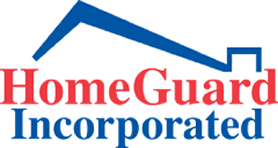Unveiling the Hidden: The Costly Consequences of Major Home Inspection Findings

What Are Some of the Worst Things Home Inspections in Alhambra Might Uncover?
Home inspections in Alhambra are a crucial step in the home buying and selling process, offering a comprehensive evaluation of a property’s condition. While many inspections uncover minor issues that are easily addressed, some findings can reveal significant and costly problems. Let’s delve into the worst things that can be uncovered during a home inspection and explore why these issues can be financially burdensome for homeowners.
- Structural Damage: One of the most alarming discoveries during a home inspection is structural damage. This can include issues such as foundation cracks, sagging floors, or roof truss problems. Repairing structural damage is not only costly but also essential for the safety and stability of the entire property. Ignoring these issues can lead to further deterioration and potentially unsafe living conditions.
- Water Damage and Mold: Water intrusion is a common concern in homes and can lead to extensive damage if not addressed promptly. Termite, Home, or roof inspections in Alhambra may uncover evidence of water damage, such as stains on walls or ceilings, warped flooring, or mold growth. Repairing water damage involves identifying and fixing the source of the intrusion, remediating mold if present, and restoring affected areas, which can be a costly and time-consuming process.
- Electrical System Issues: Electrical problems pose serious risks, including fire hazards and safety hazards. During a home inspection, issues such as outdated wiring, overloaded circuits, or faulty electrical components may be identified. Upgrading or repairing an electrical system to meet current safety standards can be expensive, especially in older homes where extensive rewiring may be necessary.
- Plumbing Problems: Faulty plumbing can result in leaks, water damage, and reduced water pressure. Home inspections may uncover issues such as leaking pipes, outdated plumbing fixtures, or drainage problems. Repairing or replacing plumbing systems can be costly, particularly if extensive piping needs replacement or if hidden leaks are discovered after the purchase of the home.
- HVAC System Deficiencies: Heating, ventilation, and air conditioning (HVAC) systems play a crucial role in maintaining indoor comfort. A home inspection may reveal issues with HVAC systems, such as malfunctioning furnaces, aged air conditioning units, or inadequate ventilation. Repairing or replacing HVAC components can be a significant expense, and inefficient systems can also result in higher energy bills over time.
- Pest Infestations: Discovering a pest infestation during termite inspections in Alhambra, such as termites, rodents, or insects, can be unsettling. Pest damage can compromise a home’s structural integrity, damage insulation, and pose health risks to occupants. Addressing pest infestations typically involves hiring professional exterminators and making repairs to damaged areas, which can add up in terms of costs.
- Environmental Hazards: In some cases, home inspections may uncover environmental hazards such as asbestos, lead-based paint, or radon gas. These hazards not only require specialized remediation but also pose health risks to occupants. Abating environmental hazards can be expensive and may involve compliance with regulatory requirements.
Home And Termite Inspections In Alhambra Give You The Tools to Make A Good Decision
In summary, major findings during a home inspection, such as structural damage, water damage, electrical system issues, plumbing problems, HVAC deficiencies, pest infestations, and environmental hazards, can be financially burdensome for homeowners. Addressing these issues often requires professional intervention, extensive repairs or replacements, and compliance with safety and regulatory standards. As such, prospective homebuyers and sellers should be aware of the potential costs associated with these major home inspection findings and factor them into their decision-making processes.




